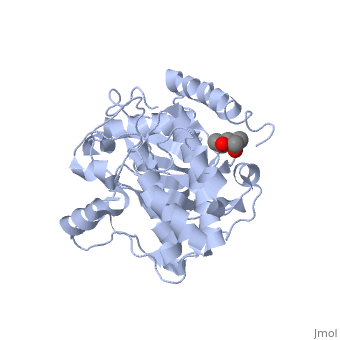1j3h
From Proteopedia
(Difference between revisions)
| Line 1: | Line 1: | ||
| - | [[Image:1j3h. | + | {{Seed}} |
| + | [[Image:1j3h.png|left|200px]] | ||
<!-- | <!-- | ||
| Line 9: | Line 10: | ||
{{STRUCTURE_1j3h| PDB=1j3h | SCENE= }} | {{STRUCTURE_1j3h| PDB=1j3h | SCENE= }} | ||
| - | + | ===Crystal structure of apoenzyme cAMP-dependent protein kinase catalytic subunit=== | |
| - | + | <!-- | |
| - | + | The line below this paragraph, {{ABSTRACT_PUBMED_12614615}}, adds the Publication Abstract to the page | |
| + | (as it appears on PubMed at http://www.pubmed.gov), where 12614615 is the PubMed ID number. | ||
| + | --> | ||
| + | {{ABSTRACT_PUBMED_12614615}} | ||
==About this Structure== | ==About this Structure== | ||
| Line 35: | Line 39: | ||
[[Category: Open conformation]] | [[Category: Open conformation]] | ||
[[Category: Preformed active site]] | [[Category: Preformed active site]] | ||
| - | ''Page seeded by [http://oca.weizmann.ac.il/oca OCA ] on | + | |
| + | ''Page seeded by [http://oca.weizmann.ac.il/oca OCA ] on Tue Jul 1 14:26:45 2008'' | ||
Revision as of 11:26, 1 July 2008
Crystal structure of apoenzyme cAMP-dependent protein kinase catalytic subunit
Template:ABSTRACT PUBMED 12614615
About this Structure
1J3H is a Single protein structure of sequence from Mus musculus. Full crystallographic information is available from OCA.
Reference
Dynamic features of cAMP-dependent protein kinase revealed by apoenzyme crystal structure., Akamine P, Madhusudan, Wu J, Xuong NH, Ten Eyck LF, Taylor SS, J Mol Biol. 2003 Mar 14;327(1):159-71. PMID:12614615
Page seeded by OCA on Tue Jul 1 14:26:45 2008


